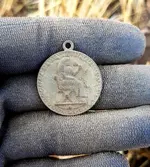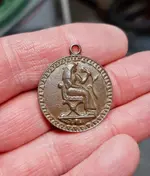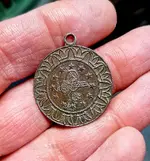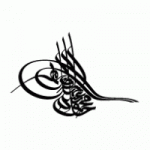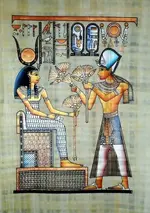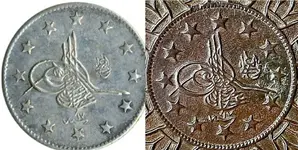I would agree it looks to be Isis holding a lotus flower on one side.
The other side is indeed a tughra of the Ottoman Sultanates. They’re notoriously difficult to read, but it looks to me like Abdul Hamid II and that the whole design has been copied from one of his coins issued by Turkey (example at the left below):
Hamid II was Sultan of the Ottoman Empire from 31st August 1876 until he was deposed on 27th April 1909, shortly after the 1908 Young Turk Revolution. The Ottoman Empire was administered from Constantinople (now Istanbul) in Turkey and Egypt had been under its rule from 1517 to (nominally) 1867, with an interruption between 1798-1801 during French occupation. Turkish coins would have circulated there in the Ottoman period.
However, in the chaos after French occupation, power in Egypt had been seized in 1805 by the Albanian commander Muhammad Ali (Kavalali Mehmed Ali Pasha). Although he was recognised as the Sultan’s viceroy in Egypt and - despite the implied subordination - Ottoman power in Egypt was effectively at an end from this time. Egypt was then granted the status of an autonomous vassal state (a ‘Khedivate’) in 1867, which was no more than a face-saving gesture by the Sultanates. Any remaining connection to the Ottoman Empire was terminated by the British in 1914.
I would think that the reign year and consequent date on the medallion probably have no significance beyond being copied from a coin that happened to have that date. If it is Hamid II as I believe, then he had no authoritative connection to Egypt since it had already split itself from Ottoman rule by this time. I think someone has produced this more recently as a decorative piece of jewellery and married the Egyptian Isis imagery together with the copied imagery from an older coin without knowing what the coin was… and, as DCMAtt observed, without knowing which way up the tughra is supposed to be interpreted.






